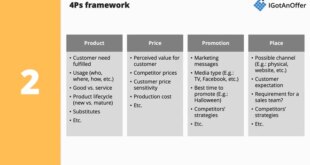Investment Banking Mergers and Acquisitions Process: Comprehensive Guide The world of investment banking, particularly in the realm of mergers and acquisitions (M&A), is a complex yet fascinating landscape that plays a crucial role in the corporate world. This guide aims to demystify the investment banking M&A process, providing a clear overview of the stages involved, key players, and critical factors that influence successful transactions.
Understanding the Investment Banking Mergers and Acquisitions Process
1. What is Investment Banking Mergers and Acquisitions?
Investment banking mergers and acquisitions involve the consolidation of companies or assets through various types of financial transactions. These activities are facilitated by investment banks, which serve as intermediaries, advisors, and financiers. The process typically involves several phases, each requiring meticulous planning and execution.
2. The Importance of Mergers and Acquisitions
Mergers and acquisitions are strategic decisions made by companies to enhance their growth, improve competitive positioning, or enter new markets. The benefits of M&A include:
- Increased Market Share: Companies can gain a larger footprint in their industry.
- Cost Efficiency: Merging can lead to reduced operational costs.
- Access to New Technology and Expertise: Acquisitions can bring in new capabilities that enhance innovation.
3. Stages of the M&A Process
The M&A process can be divided into several key stages:
3.1. Preparation Phase
- Strategic Planning: Identify goals and objectives for pursuing M&A.
- Target Identification: Research and shortlist potential companies for acquisition.
3.2. Due Diligence
- Financial Analysis: Review the financial health of the target company.
- Legal Examination: Assess any legal issues or liabilities.
3.3. Valuation
- Valuation Techniques: Employ methods such as discounted cash flow (DCF), comparable company analysis, and precedent transactions to determine the value of the target.
3.4. Negotiation
- Terms Discussion: Negotiate terms and conditions, including price, payment structure, and post-merger integration.
3.5. Closing the Deal
- Final Agreement: Sign the definitive agreement.
- Regulatory Approval: Obtain necessary approvals from relevant authorities.
3.6. Integration
- Post-Merger Integration: Develop a plan to combine operations, cultures, and systems of both companies.
4. Key Players in the M&A Process
The success of M&A transactions often depends on various stakeholders, including:
- Investment Bankers: Provide advice and facilitate the transaction.
- Corporate Executives: Make strategic decisions regarding the deal.
- Legal Advisors: Ensure compliance with laws and regulations.
- Accountants: Conduct financial assessments and audits.
5. Challenges in the M&A Process
Despite the potential benefits, M&A transactions can face numerous challenges, such as:
- Cultural Clashes: Differences in corporate culture can hinder integration.
- Overvaluation Risks: Misjudging the value of the target can lead to significant losses.
- Regulatory Hurdles: Navigating legal requirements can complicate the process.
6. Best Practices for Successful M&A
To increase the likelihood of a successful merger or acquisition, companies should consider the following best practices:
- Thorough Due Diligence: Conduct comprehensive assessments of the target.
- Clear Communication: Maintain open lines of communication among all parties.
- Integration Planning: Develop a detailed integration strategy early in the process.
Tips for Navigating the M&A Landscape
- Conduct Market Research: Understand market trends and industry dynamics.
- Leverage Technology: Utilize data analytics for informed decision-making.
- Engage Experienced Advisors: Seek counsel from seasoned M&A professionals.
- Assess Cultural Compatibility: Evaluate the cultural fit between companies.
- Prepare for Contingencies: Develop plans for potential setbacks.
- Focus on Synergies: Identify areas where combined operations can enhance efficiency.
- Set Realistic Timelines: Establish achievable deadlines for each phase.
- Monitor Regulatory Changes: Stay updated on relevant legal and regulatory developments.
- Emphasize Post-Merger Communication: Keep stakeholders informed throughout the integration process.
- Review and Learn from Past Transactions: Analyze previous M&A deals to identify lessons learned.
Frequently Asked Questions (FAQs)
- What is the main purpose of mergers and acquisitions?
- M&A aims to enhance growth, improve market share, and gain competitive advantages.
- How long does the M&A process typically take?
- The duration can vary, but it generally takes several months to over a year.
- What are the key factors in valuing a company for acquisition?
- Key factors include financial performance, market conditions, and growth potential.
- What role do investment bankers play in M&A?
- They provide advisory services, facilitate negotiations, and help secure financing.
- What are common challenges faced during M&A transactions?
- Cultural clashes, regulatory issues, and overvaluation risks are common challenges.
- How can companies ensure successful integration post-M&A?
- By developing a clear integration plan and fostering communication.
- What is due diligence in the M&A process?
- It involves assessing the target company’s financial, legal, and operational aspects.
- What are some common payment structures in M&A?
- Payment can be made in cash, stock, or a combination of both.
- How can cultural differences impact M&A?
- Cultural mismatches can lead to integration difficulties and employee dissatisfaction.
- What should companies prioritize when considering an acquisition?
- Companies should focus on strategic fit, financial health, and growth opportunities.
Conclusion
The investment banking mergers and acquisitions process is a multifaceted journey that requires careful planning, strategic insight, and thorough execution. Understanding the stages involved, key players, and potential challenges can empower companies to navigate this complex landscape successfully.
Mergers and acquisitions can offer significant advantages, such as enhanced market presence and improved operational efficiencies. However, the success of these transactions hinges on the ability to manage integration effectively and address potential challenges. By following best practices and maintaining a strategic focus, organizations can maximize the benefits of M&A while minimizing risks.
 Gerbang Finance
Gerbang Finance

